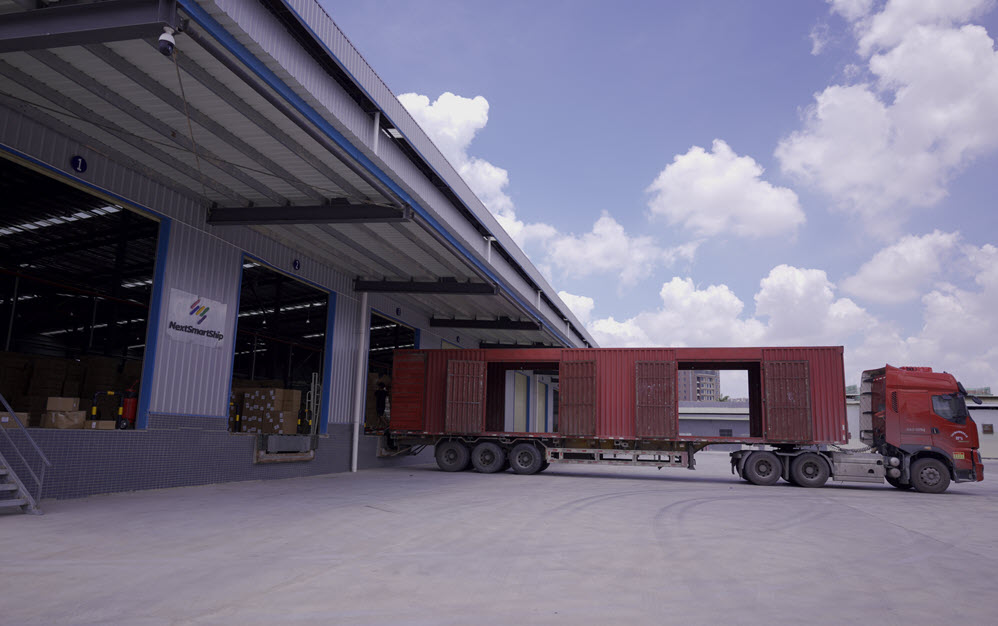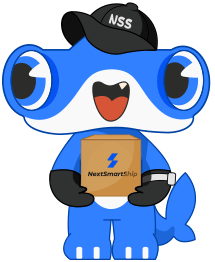Are you struggling with skyrocketing inventory holding costs and shipping delays? Is it becoming a challenge to maintain timely deliveries? Is labour cost getting in the way of your cost-saving scheme? Or is your limited storage space impacting your efficiency?
If it sounds like the story of your business, the solution is cross-docking! It is key to reducing expenses, enhancing responsiveness, and optimizing supply chain management.
This article will walk you through cross-docking and how it can revolutionize your business. We will also discuss its types, services, advantages, and challenges. Let’s dive in to discover what cross-docking can do for your business.
Table of Content |

What Is Cross Docking?
Cross-docking is a logistics process that involves transferring goods from one vehicle to another with intermediate storage.
Simply put, the products are not stored in a warehouse. Instead, they are unloaded from the incoming trucks at the inbound dock, sorted and consolidated at cross-dock, and loaded onto the outgoing trucks at the outbound dock.
This seamless procedure reduces the need for storage space, labour costs, and handling time. It streamlines supply chain management by improving product flow, delivery time, and customer service.
You dont have to bear with excessive storage, handling delays, and labour costs while your customers get speedy deliveries. Cross docking is a game changer for your business, optimizing your entire logistical framework.
When Do You Need Cross Docking?
Let’s explore a few situations where this process comes to the rescue:
1. To Deliver Time-Sensitive Products
When time is of the essence, cross-docking shines. Cross-docking shortens the delivery time by removing the interim storage at the warehouse. Thus, it works great if your company sells time-sensitive or seasonal products.
2. To Fulfill Recurring Orders
If you have a high and consistent inventory demand with limited storage resources, cross-docking is your friend! It merges incoming shipments with outgoing orders, helping you handle a recurring fulfilment process. Not only it solves the storage issue, but it also meets customer satisfaction with timely deliveries.
3. To Consolidate Shipments
Cross-docking is quite helpful when you have to ship products to numerous retailers. By utilizing cross-docking, you can consolidate multiple small shipments into larger ones. It optimizes your transportation costs and time by eliminating the need for separate deliveries.
4. To Deliver Mixed Freight
Cross-docking simplifies the logistics of managing separate inventories by efficiently consolidating and transferring mixed freight. It offers a temporary holding space for the products that do not need a priority shipment, so you can deliver the products first and get the rest of the freight from the facility afterwards. The result? Streamlined deliveries and satisfied customers.
Types of Cross-Docking
There are two main types of cross-docking: pre and post-distribution cross-docking. Here’s how both differ from each other.
Pre-Distribution Cross-Docking
In pre-distribution cross-docking, the distribution plan is mapped out before the facility receives the inbound shipment. The cross-docking facility gets the products from the supplier, performs minimal sorting and repackaging, and ships it back to customers immediately.
It streamlines the flow of goods directly from suppliers to customers, reducing storage time and cost and ensuring faster delivery.
Post-Distribution Cross-Docking
In post-distribution cross-docking, products are received and stored in the cross-dock for slightly longer. The products are sorted, consolidated, de-consolidated, packaged, and labelled before going for outbound shipment.
It is often used in retail settings where products from different suppliers are combined and prepared for individual recipients. It optimizes efficiency and reduces handling and storage costs.
Methods Of Cross-Docking
Cross-docking employs different methods to optimize the supply chain depending on the business type. Here are the most common three ways of cross-docking.
1. Continuous Cross-Docking
In continuous cross-docking, there is a continual flow of products from incoming vehicles to outgoing vehicles. As the products are received at the inbound dock, they are readily transferred to outbound vehicles with little to no storage in between.
Continuous cross-docking minimizes the storage time, fastens the delivery, and streamlines the transfer process. However, it requires precise coordination among suppliers, carriers, and retailers.
2. Consolidation Cross-Docking
In consolidation cross-docking, several small shipments are combined into larger, more efficient loads. Different incoming shipments are held in the staging area and loaded into one outgoing vehicle, usually depending upon the destination or customer requirement.
Consolidation cross-docking optimizes transportation efficiency by reducing individual shipments and saving shipping costs.
3. Deconsolidation Cross-Docking
Opposite to consolidation cross-docking, reconsolidated arrangements involve breaking down larger shipments into multiple smaller ones. The products are received in bulk, sorted at the cross-docking facility, and sent for individual deliveries.
Deconsolidation cross-docking allows for efficient distribution, ensuring that the right products reach the right destination. It also eliminates the need for managing separate inventories for individual retailers.
Advantages Of Cross-Docking
There are several advantages cross-docking offers to revolutionize your business. Let’s discuss a few!
Reduced Cost
Inventory management and storage take quite a lot of money. Cross-docking cuts costs and streamlines your operational budget by eliminating long-term storage. It reduces costs associated with warehousing, inventory holding, and handling labour.
Reduced Shipping Time
Continuous transfer of goods from incoming to outgoing shipments results in an accelerated shipping process. Products flow readily from suppliers to customers without delays, resulting in faster order fulfilment and shorter lead times.
Increased Sustainability
Cross-docking minimizes the carbon footprint associated with warehousing and inefficient transportation. Consolidated shipments and optimized routes help decrease energy consumption. Thus, it is effective for businesses with environment-friendly practices.
Reduced Storage Space
Cross-docking reduces or eliminates the need for inventory storage capacity. Not only it saves up space, but it also cuts down on the real estate cost of the warehouse.
Better Responsiveness
Cross-docking enhances supply chain responsiveness, allowing you to adapt quickly to changes in demand. Products can be redirected and rerouted more efficiently, allowing you to meet customer demands. It ensures correct and timely deliveries, minimizes stockouts, and improves overall customer satisfaction.
Smooth Delivery Process (Less Damage)
Products are often damaged when moved in and out of the storage facility. Cross-docking eliminates the risk of damage by reducing handling and storage. It results in fewer product losses, improved quality control, and enhanced customer experience.
Challenges Of Cross-Docking
While there are many advantages cross-docking offers, it does come with a few drawbacks. Analyze and understand each merit and demerit before opting for the process.
Needs Meticulous Scheduling/ Close Coordination
Cross-docking requires ample planning and coordination to keep the flow of goods optimal. The suppliers, manufacturers, retailers, and recipients must coordinate to avoid conflicts, disruption, and delays.
Failure to do so can result in inventory mismatches, missed transfers, and logistical bottlenecks. It can do more damage than good, leading to poor customer service and higher costs.
Disruptive To Traditional Supply Chain
Introducing cross-docking requires significant adjustments that disrupt conventional supply chain procedures. You must take your suppliers on board, implement the technology needed, and manage warehouse operations accordingly.
Your system and personnel should adapt to the new approach, which might take some time and concentrated effort.
High Upfront Cost
While cross-docking saves you money in the long run, it involves a substantial upfront investment. It comprises the infrastructure, transportation, technology, and training costs required to set up the cross-docking model.
As an e-commerce business, carefully evaluate your financial limitation and return on investment before investing in cross-docking.
Does Your Business Need Cross-Docking?
Cross-docking has both its benefits and challenges. It helps you save lead time, storage space, and shipping costs. On the other hand, it requires meticulous planning and seamless execution along with high investment for optimum results.
Businesses must first evaluate their requirements and goals before committing to cross-docking. For example, cross-docking is a good option if you have a consistent demand and hope to reduce shipping costs. While if your inventory demand fluctuates readily, cross-docking can do more damage to your business.
Cross-docking will not be a wise choice if your business relies on long-term storage due to seasonal demands or market conditions.
Similarly, if your business is not equipped with related technology, such as WMS or ERP system, it would not be easy to streamline your operations with other parties involved in the cross-docking model.
The best way to gauge whether cross-docking fits your business is to consult a professional fulfilment expert. Get in touch with NextSmartShip to get an expert opinion and best practice regarding cross-docking for your ecommerce business. Optimise your supply chain and reap the benefits now!




